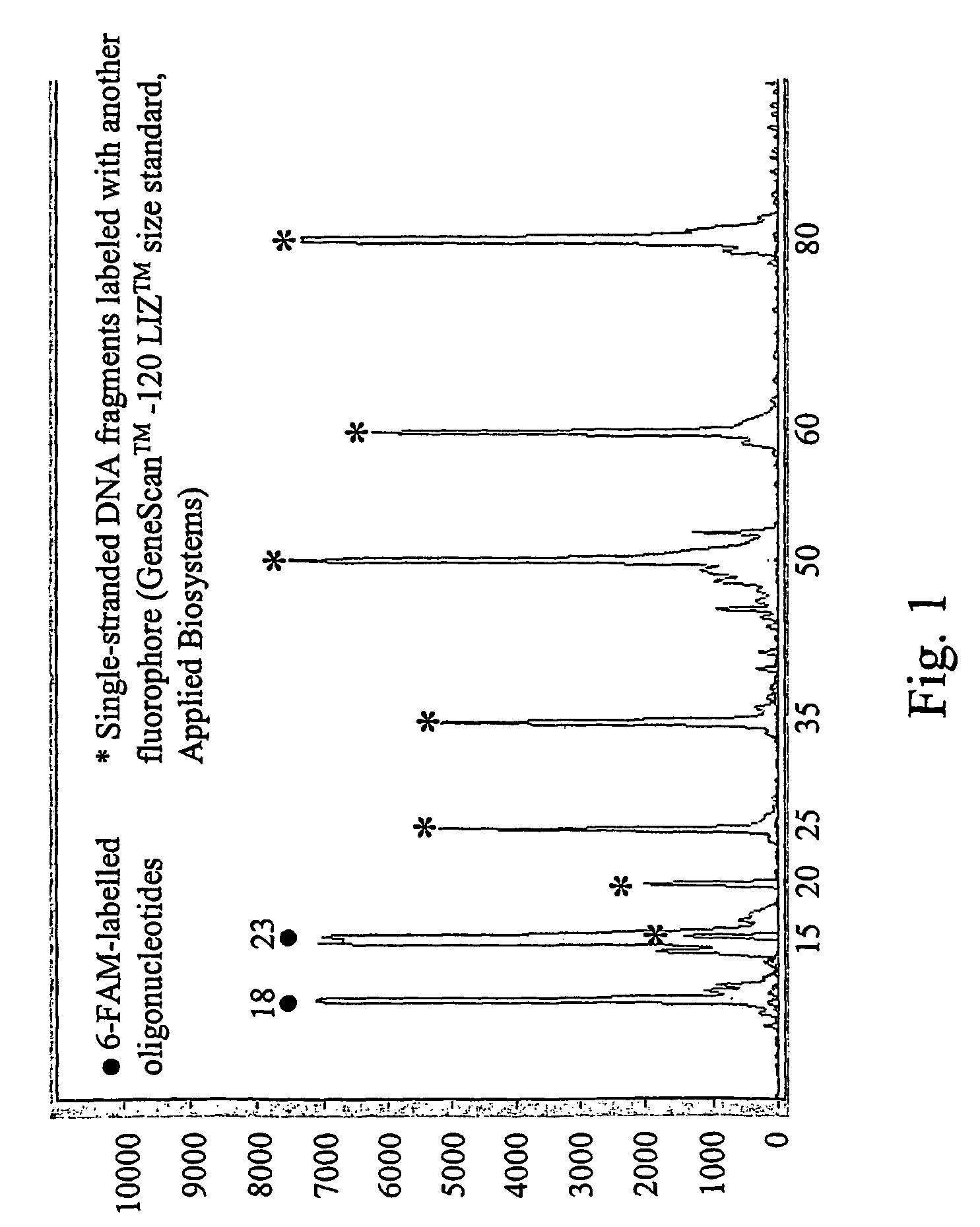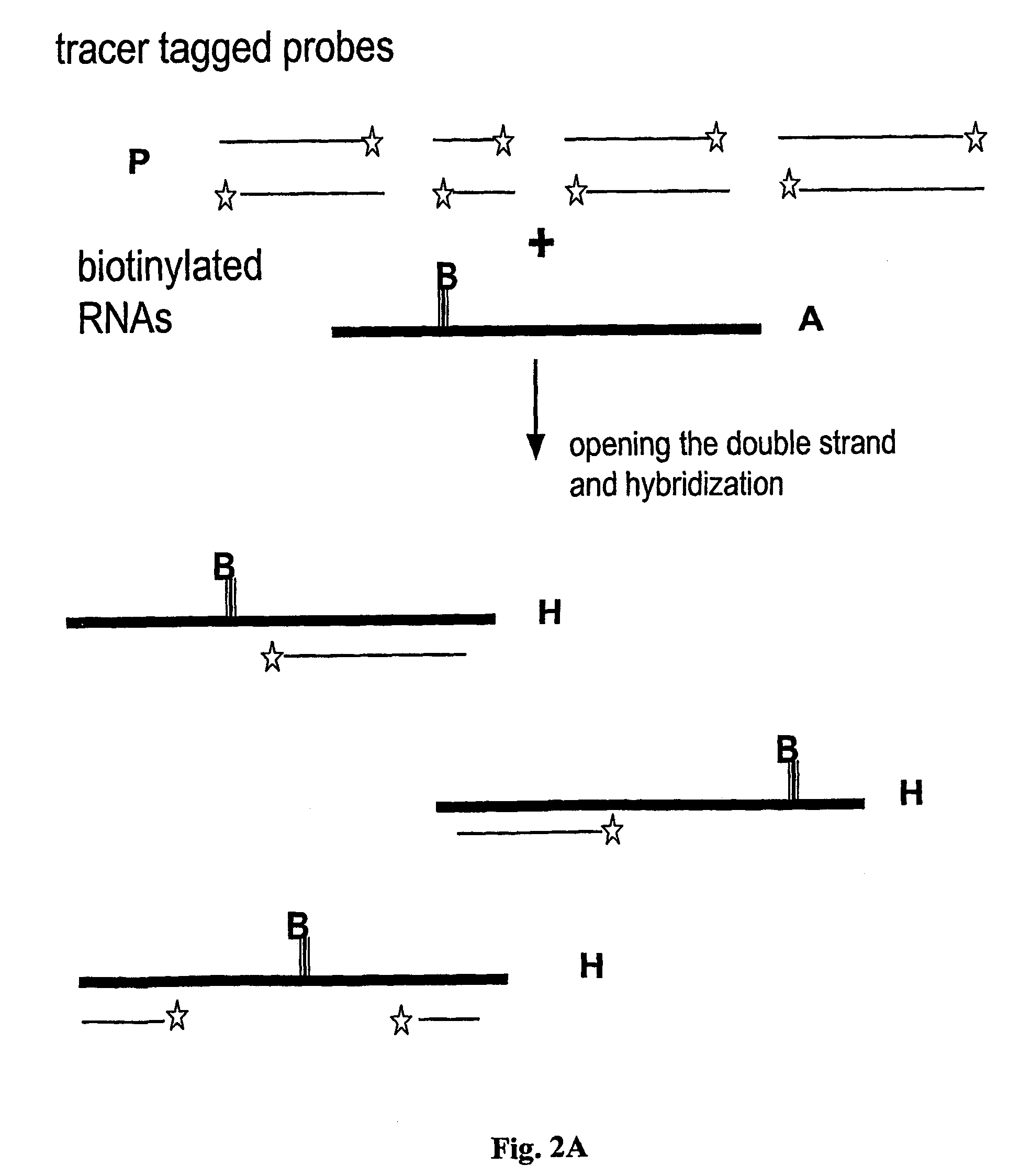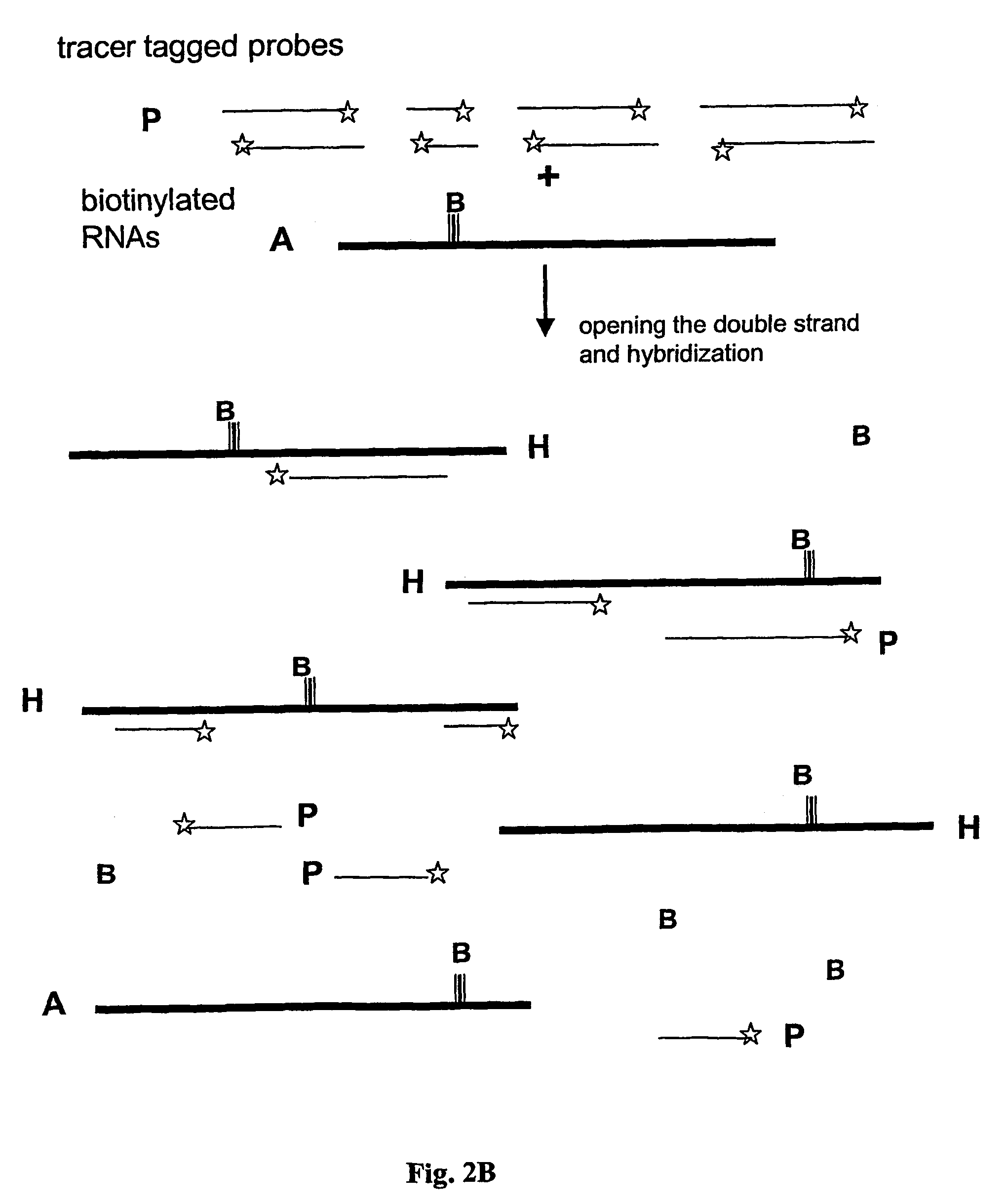Method and test kit for quantitative determination of polynucleotides in a mixture
a polynucleotide and test kit technology, applied in the field of methods and test kits for quantitative determination of polynucleotides in a mixture, can solve the problems of low yield, not quantitative, and the inability to quantitatively compare in a wide dynamic rang
- Summary
- Abstract
- Description
- Claims
- Application Information
AI Technical Summary
Benefits of technology
Problems solved by technology
Method used
Image
Examples
case 1
ing Regions from Ribosomal RNA
[0083]The rDNA fragments are selected to represent more or less conserved or variable regions representing a certain species or group of bacteria or microorganisms. The DNA fragments are provided with resolution enabling tags or tails or labels allowing a good resolution in the size fractionation-stage.
[0084](a) polynucleotide tailing (See step 2)
[0085](b) tracer labeling (See step 2)
[0086](c) protein-tailing (See step 2)
case 2
ing Regions from Other Sources
[0087]The polynucleotides are selected to represent regions of other genes e.g. antibiotic resistance genes or their corresponding mRNA. Polynucleotide sequences capable of distinguishing between different alleles of the same gene may also be selected.
Step 2—End-Labeling the DNA Probes with a Tracer, Fluorophores or Size Providing Tail
[0088]Preferably, two (or more) sets of the DNA with distinguishable dyes are prepared. This allows simultaneous comparative studies of variations in polynucleotide amounts, particularly rRNA amounts due to shifts in populations or internal mechanisms, e.g. pathological stages or due to external stimuli, such as drugs. Steps 1 and 2 are preparative and the bases for the commercially valuable test kits. The DNA pools may be made in large quantities for a large number of experiments. Accordingly, there should not be any need to repeat this rather tedious phase frequently.
Analytical Steps
Step 1 Preparation of a Single Strande...
example 1
Mobility of Probes in Electrical Field and Modification of Probes
[0130]Total RNA was extracted from Clostridium symbiosum strain VTT E-981051T (henceforward E1051) and hybridized with two 16S rRNA targeted probes Bact (Amann R. I., et al., Appl. Environ. Microbiol. 56:1919-1925, 1990) and Erec (Franks, A. H., et al., Appl. Environ. Microbiol. 64:3336-3345, 1998). Probe Bact is specific for bacteria (previously eubacteria) (Amann et al., 1990), whereas probe Erec is specific for bacteria belonging to the group of Clostridium coccoides—Eubacterium rectale (Franks, A. H., et al., Appl. Environ. Microbiol. 64:3336-3345, 1998). The species Clostridium symbiosum belongs to the Clostridium coccoides—Eubacterium rectale-group and thus its rRNA / rDNA was recognized by both probes Bact and Erec. In addition, Erec-5A—a modified version of the probe Erec with an attached 5A-tail (five additional adenosins)—was used in the model experiment. The experiment followed the steps set forth below:
Prepar...
PUM
| Property | Measurement | Unit |
|---|---|---|
| volume | aaaaa | aaaaa |
| volume | aaaaa | aaaaa |
| volume | aaaaa | aaaaa |
Abstract
Description
Claims
Application Information
 Login to View More
Login to View More - R&D
- Intellectual Property
- Life Sciences
- Materials
- Tech Scout
- Unparalleled Data Quality
- Higher Quality Content
- 60% Fewer Hallucinations
Browse by: Latest US Patents, China's latest patents, Technical Efficacy Thesaurus, Application Domain, Technology Topic, Popular Technical Reports.
© 2025 PatSnap. All rights reserved.Legal|Privacy policy|Modern Slavery Act Transparency Statement|Sitemap|About US| Contact US: help@patsnap.com



